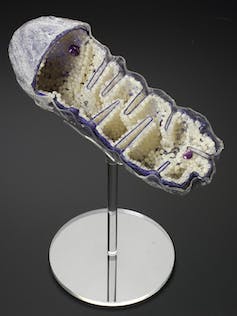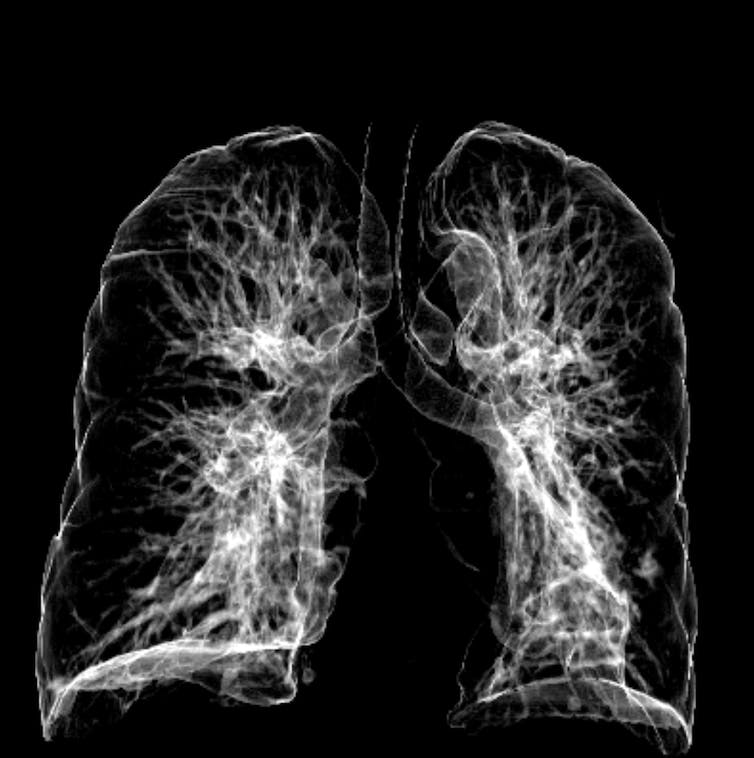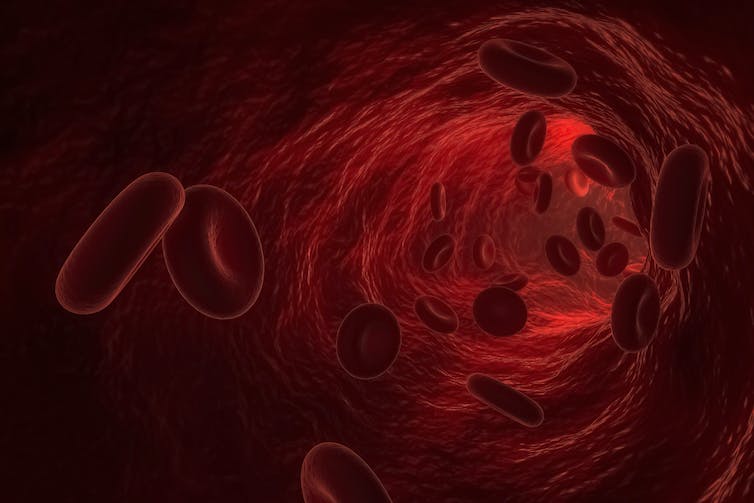
Curious Kids is a series for children of all ages. If you have a question you’d like an expert to answer, send it to [email protected].
Why do humans and animals have to breathe? – Tennessee, age 7, Hartford, Kentucky
You need to breathe for the same reason you need to eat: It helps you make the energy your body requires.
You probably already know that food is fuel for your body. When you eat, food gets broken down in your stomach and enters your bloodstream.

A plastic model of a mitochondrion.
Science Museum Group Collection The Board of Trustees of the Science Museum, CC BY-NC-SA
From there, it gets delivered to your cells. Inside your cells are even tinier structures called mitochondria, which are the engines that power your entire body. Your mitochondria use the nutrients from food as fuel. But to turn it into energy, they need one more ingredient – oxygen.
I am a biologist who studies animals and plants. All living things need oxygen, except for some bacteria and a few tiny animals that don’t. You might be surprised to learn how many ways there are to get oxygen – breathing is only one of them.
Lungs and their linings
When you breathe in, your lungs temporarily trap oxygen, allowing it to pass through very thin surfaces in your lungs into your bloodstream.

A CT scan of healthy lungs.
RAJAAISYA/Science Photo Library via Getty Images
Because you need a lot of oxygen, your lungs need a lot of surface area to do their job. They achieve this by having millions of little air sacs lined with tiny blood vessels called capillaries.
If you could somehow flatten out all the capillary surface area in your lungs, it would more than cover the floor of an average classroom – around 1,350 square feet (125 square meters).
Getting enough oxygen
If breathing is kind of like eating, why can’t you just take three breaths a day?
One reason is that air on Earth is only 21% oxygen – the rest is mostly nitrogen. That means you need to take five breaths just to get the equivalent of one complete lungful of oxygen.

Your blood can carry only so much oxygen.
libre de droit/iStock via Getty Images
Also, when you take a breath, only some of the oxygen makes it into your bloodstream. Even though people and many animals make specialized proteins to grab and carry oxygen, there’s a limit to how much they can hold at once. To keep your body’s oxygen levels high enough to power all your cells, you need to keep breathing.
Of course, once you breathe in, you also have to breathe out. The gas you breathe out is called carbon dioxide. You can think of it as the exhaust from your mitochondria engines, the leftovers once the mitochondria burn oxygen and nutrients to release energy.
Other animals and plants
Most living things get oxygen without lungs.
Many…



